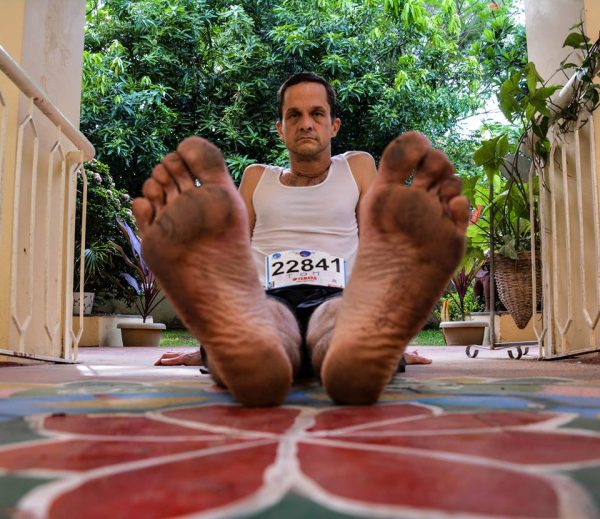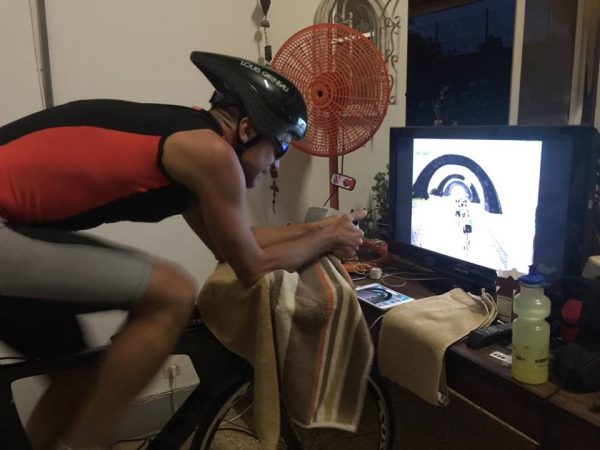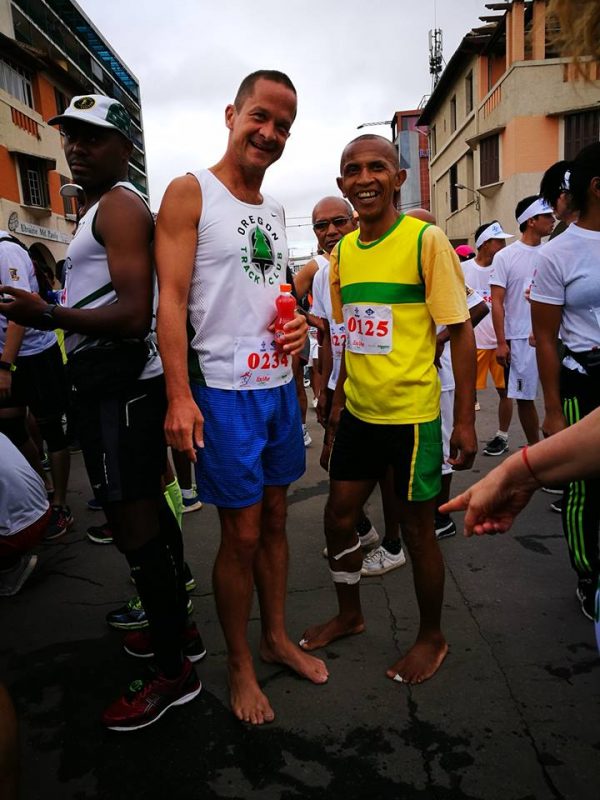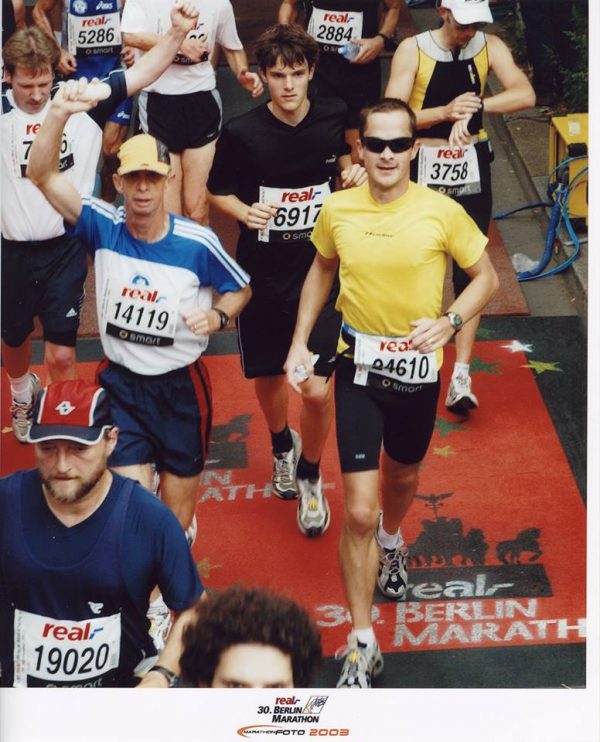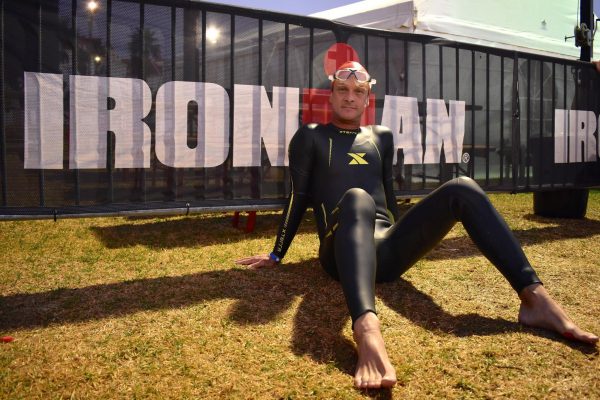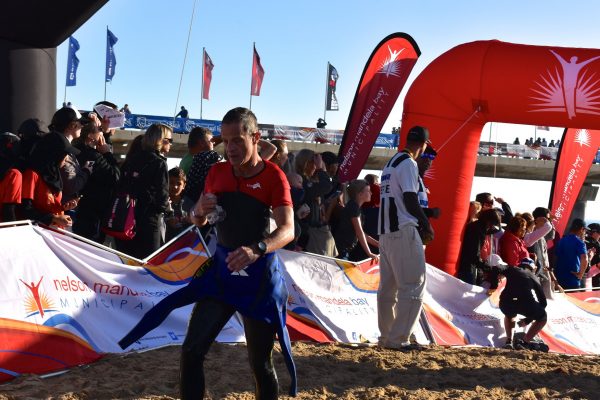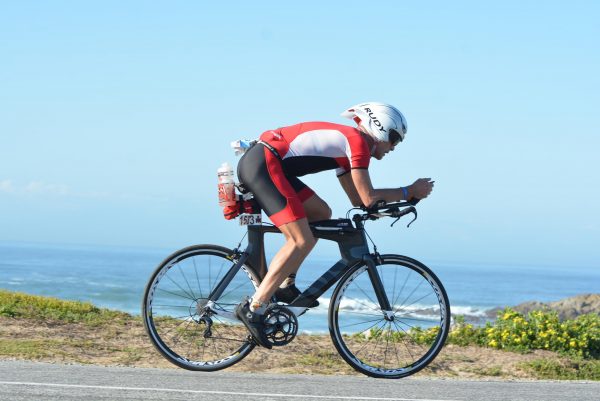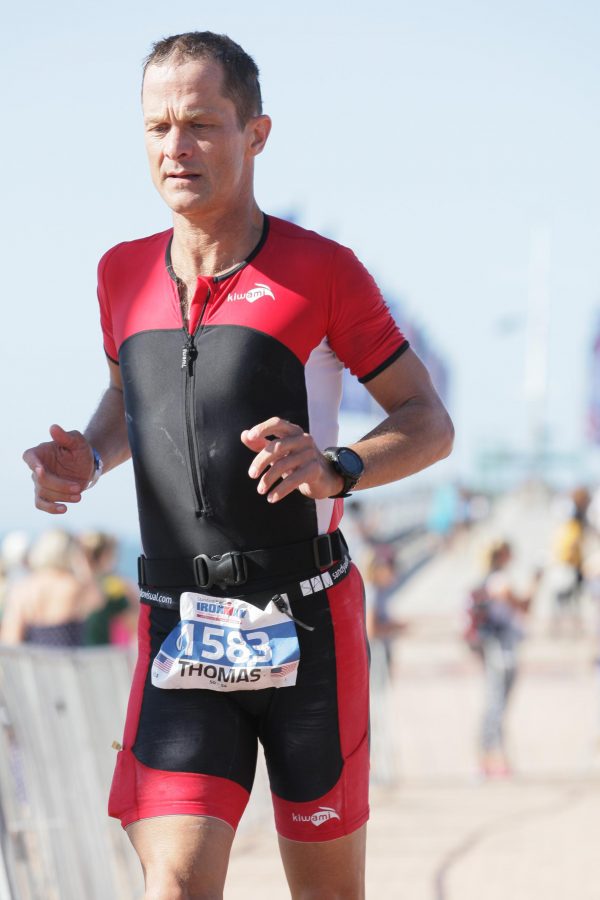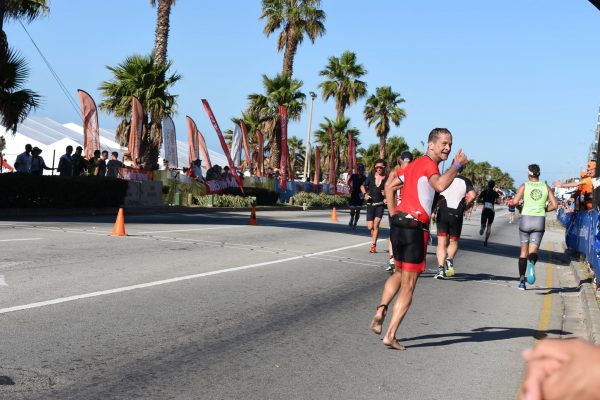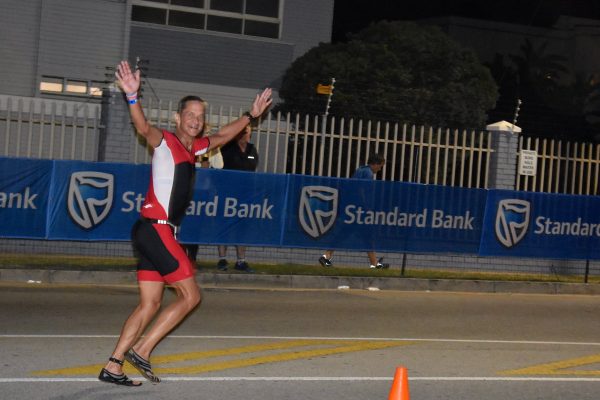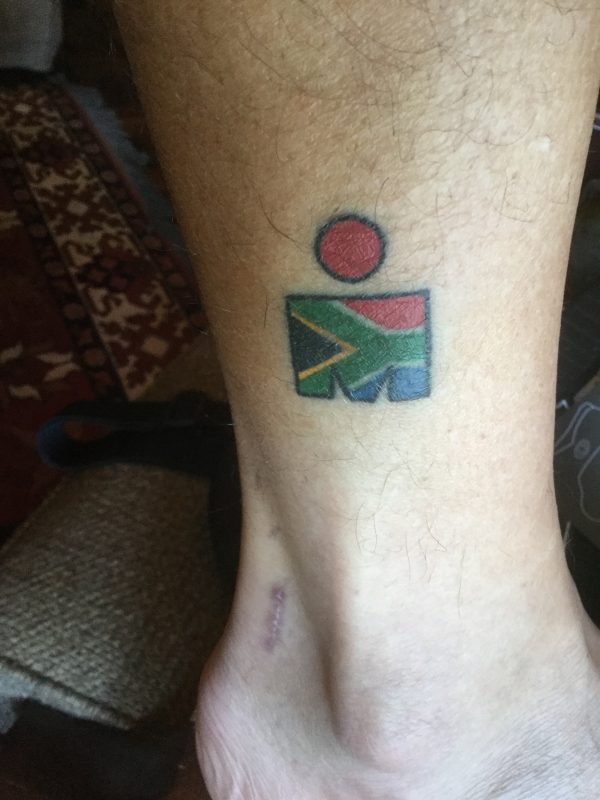I’ve been a runner for about four decades. I was never especially good at it, but I’ve managed to pull off nearly twenty marathons and uncountable 5k, 10k and other distance races. About twenty years ago I thought I’d give triathlons a try. It took a few years to learn how to swim properly, but that kept things interesting. In all those years, I never seriously considered tackling an ironman distance race. Until one day in early 2015 and for no apparent reason, I did.
It was a newspaper article or something that triggered it. Living in Chennai, India, I read about some Indian movie star I’d never heard of who had done the “amazing” feat of completing an Ironman at age 50. I put “amazing” in quotes because I was 48 myself, and while I thought doing an Ironman is certainly amazing, clearly the main thing that impressed the writer was clearly the actor’s “advanced” age. In the same event, I read how another local runner in my club who had finished his inaugural Ironman just minutes ahead of the 18-hour time limit. I wondered what must have gone through his mind those last few hours – after swimming 2.4 miles, biking 112 miles, and then running a marathon, agonizing through the last 10 miles of a grueling day – whether it would all end up being for nothing when he missed the time limit.
So that seemed like a fun thing to try…an Ironman at age 50!
But as we headed to Madagascar post-India I was in an awful state, athletically. I arrived a couple weeks shy of my 49th. I wasn’t running at all, really – I’d been in physical therapy to deal with various forms of tendinitis stemming from bad running form and a stubborn insistence on running barefoot (since 2010). Over the last few years I’d found it increasingly difficult to run two days in succession, and sometimes needed not one but two days in between runs, because I was constantly sore everywhere. Once I settled in, a colleague showed me the trails I could bike to and from work in Antananarivo. I fantasized about getting my bare feet onto the red clay that was speeding by under my knobby tires.
Eventually I was able to start running 3, 4 miles – sometimes 3 times a week – and then actually started running the 5-mile commute to work! I was starting to get back my old running form. In October I signed up for the local 10k and I was smiling as I left the starting line. I had torn my foot when I whacked it against an unseen rock but I had run a few days prior with no issues and I was confident I’d be fine. This race was to be an important milestone if I had any hope of doing Ironman South Africa in April 2017 – the only Ironman on the African continent.
But a mile later I was on my cell phone asking to be picked up. I had a sharp pain in my right foot and couldn’t go another step. To the local clinic, and after a misdiagnosed anaerobic infection (???), a 10-dollar x-ray revealed a broken metatarsal. Sidelined again!!
It took about three months to heal my aging bones, but by January I was back on the trails. Slowly. But eventually I surprised myself when I was able to run successive days. Sometimes three days in a row, without being sore. A couple of times I managed to run the five miles to work, and then, 8 hours later, run five miles back home.
I turned 50 in April and started to think seriously about doing Ironman South Africa in April 2018 – still ten days before my 51st. Ordered training guides on Amazon, and by July I had signed up for an account on TrainingPeaks. And Zwift, which would be a lifesaver, given that it’s nearly impossible to do any serious road training in Antananarivo. Things started to come together. As the possibility started to become real, I thought I’d make things a bit more interesting.
Cycling training was only possible thanks to Zwift, an online cycling and running platform that allows you to virtually cycle with – or race against – thousands of others in real time. The helmet and glasses are clearly unnecessary, but I was trying it out for comfort. Never try something for the first time when you’re racing.
I’ve been running almost exclusively barefoot since about 2010, and as people learned about my plans they naturally asked whether I planned to do the Ironman barefoot. Honestly, I didn’t know. I had never had the courage to do a full marathon barefoot – the closest I had come was wearing Vibram Fivefingers in Namibia in 2013. But I had this crazy idea that I could pull it off. International Triathlon Union rules are pretty serious – there are rules about how you pass other cyclists to avoid a drafting penalty, even a rule about not unzipping your shirt below your sternum (or get a penalty!). But I checked and re-checked, and it seems there’s no rule about running in shoes.
Just before the 2017 Antananarivo Marathon. I met one other barefooter – the only one in the race, as far as I know.
So I decided I’d give it a shot and singed up for the Antananarivo Marathon. Not only that – I also decided to dedicate my race to my Dad, a former marathoner and Boston Marathon finisher – currently battling Parkinson’s Disease. So I put up a fundraising page and continued to train. In October I’d do the Antananarivo marathon fully barefoot to validate it could be done, and in November, a longer-than-Olympic triathlon with a grueling climb in Mauritius (but the organizers insisted on shoes). The marathon ended up being postponed to December (plague outbreak and all) but I managed to pull it off. But it drilled home again: a marathon is SO LONG!! I couldn’t really wrap my mind around the idea of an Ironman.
My Dad and I ran the 2003 Berlin Marathon together. It was the tenth marathon for both of us. I was still in my mid-30s, but he was approaching 60. We finished in under four hours, with less than 10 seconds to spare!
In December I brought back (from the U.S.) a shiny new (for me) triathlon bike that cost (used!) four times what any other bike I have ever owned cost. And the nice lady at the airport somehow arranged it so it didn’t cost me a time to get it from Oregon to Madagascar, even inside it’s big black plastic box.
In February and March reality started to sink in. I was routinely on the bike trainer for 4 and 5 hours at a time, and my training was starting to slip as I found myself unable to pull off 2+ hour runs. Swimming was going great and I backed off the running (but was worried) because I was afraid of an injury at this point. The hardest part about doing an Ironman, in retrospect, is the training commitment and the sheer number of hours involved. I was routinely telling my wife we couldn’t go away on a trip or do this or do that because I had to spend the day training. I still don’t know how people with kids at home, or jobs with unpredictable hours, manage to do it.
Eventually, however, April arrived. I had cycled the course virtually (another virtual cycling platform, Rouvy), and I had finally peeked at the Ironman South Africa website and we had our travel plans in order. The final few weeks I was extra careful – I’m notoriously clumsy – to try and avoid getting hurt but that didn’t go well. In the opening days of April I was cut off on my mountain bike in traffic. I was practically standing still, and my cleat wouldn’t unhook as I slowly began tipping sideways, and only broke free as I fell on the street. I felt a pain in my foot but continued on, and as I parked my bike at work I looked more closely and realized I could see inside my foot into the space where the achilles is, through a one-inch vertical gash. There was almost no blood, but with every step, my achilles would pull the skin open. We have a doc at work, and my office mates brought me a cup of coffee and took pictures of the ordeal as I had nine stitches put into my foot two weeks before my first Ironman.
But I had done too much training (and spent too much money) at this point to back down. My plan was to only ever have to do this once – I had told people that if I posted a respectable time, that would be it for me. So that was my goal: a respectable time.
Port Elizabeth, South Africa was buzzing with excitement. Or maybe it was just me. Everything was a blur at this point – following the detailed instructions, checking in, biometrics, race expo, putting all my gear into piles and numbered, colored bags, visualizing the race and what I’d need when… On race morning, my stomach was a mess – but I wasn’t alone at 5 am as there were lines waiting for toilets everywhere. Hugs, pictures, “good luck” – “one more banana?” My patient wife, my biggest supporter was helping me remember things because I was off in some distant, pain and stress-filled imaginary land. And then before I knew it, I found myself surrounded by a few thousand people covered in black rubber were in chutes, pressing forward to the inevitable start.
Like a duck – looking calm above the water, but paddling like hell below the surface.
The swim was an absolute joy. We were released ten at a time into the water and I quickly glided into a nice rhythm. The sea was the perfect temperature for wetsuits, and while I couldn’t see the next buoy easily from the previous one, I soon figured out that the crane in the distant port lined up perfectly with the course, making sighting easier. As I rounded the far turn (roughly halfway) I dared look at my watch and was overjoyed to learn that I was well ahead of schedule. I rounded the turn and again quickly learned that the left edge of Port Elizabeth’s skyline lined up perfectly with the line of buoys that stretched ahead. When I came out of the water at 1:12 or so (I had expected 1:30) I felt like I had a stupid grin on my face, though none of the photos reflect this. As we exited the water and approached the transition area, we had the option to take advantage of a freebie I’ve never seen in a triathlon – you open the top part of your wetsuit, plop down in a plastic white chair, and a couple of volunteers yank your wetsuit off! A great service, because normally getting it over your ankles is a huge hassle.
I took way too long in transition, but…I figured I’d be on the bike for a good seven hours, so a couple of minutes wouldn’t make a difference.
For the bike course, you ride out of town along a beautiful rocky coastline for about half an hour or so, then turn inland up a hill, and eventually end up coasting down a looong, slightly downhill, straight stretch until you hit the coast again. I was conscious of the stringent anti-drafting rules but it was difficult to maintain the distance required between bikes (I’ve always used three bike lengths, but the organizers had said 12 meters). This appeared to be routinely ignored, but I realized I’d wear myself out mentally if I focused on this too much, as people were constantly getting into my space and passing each other as the cyclists sorted themselves out. Occasionally I’d hear one of the official motorcycles come up behind and slowly pass as the referee on the back with his clipboard carefully eyed the riders. Getting called for a penalty would result in having to sit out a few minutes in a penalty tent. To be honest I wasn’t worred about the time as much as I was simply not remembering to (or finding) the penalty tent at the right time – which would then result in a disqualification.
As I made my way back to the start (the course is out-and-back, out-and-back (twice!)) that looong downhill became a long uphill into a slight, but steady breeze. which I knew would increase as the day went on. Before I knew it, I was back in town, finishing my first 56-mile/90-km loop. I was relaxed, and pedaling easily, well back from the guy in front of me when a race official (?) jumped out of the crowd and barked, “THAT’S NOT TWELVE METERS!!” This put a damper on things, but thankfully I was allowed to continue, made the turn, and went in for the second loop. And as I went down the long downhill stretch i could feel the wind at my back and I knew it would be a slog coming back up. And it was. My thighs were starting to feel the impact of the morning, it was getting warm, and the sensitive parts that bear your weight on a bicycle were getting tender. But eventually I made it up, and again was pleasantly surprised I’d managed to finish the bike in 6 1/2 hours, well ahead of my expected time. But now I started to become more and more preoccupied with the idea of having to run a marathon shortly.
As I came out of the second transition and started my run, here’s what that “preoccupation” actually looked like:
Less than a mile into the run, I stepped on a tiny bit of wire (this happens maybe once every six months, normally) that embedded in my foot. I sat down briefly to try and pull it out, but failing, decided that the pain from that would likely fade in comparison to what lay ahead, and got back on my feet.
I was surprised at the amount of focus on my bare feet from the crowd. The run course is basically 5 km long, on the main street of the city, with an uphill stretch at either end. So you end up running the thing four times one way and four times the other way – alternating. It was super hot still (a disadvantage of swimming and biking well!) and it seemed that every 200 meters someone shouted “Where’s your shoes?” I tried to remain upbeat and smile and wave, but gradually it became irritating.
As I rounded the first loop wearing the first of four colored wristbands that would be given to me as I passed the checkpoint, I was still in good spirits – it had taken an hour, and though I knew the next three laps would be slower, things were going well. Anne was getting regular updates via the SMS system offered by the organizers, and I broke the race into eight chunks – eight times I would pass her, in addition to the four wristbands, and the eight times I’d have to U-turn at the far ends of the course.
At one point, a teenage girl called, “Barefoot man!” and when I came closer, she handed me a note with her name and contact information, wrapped inside a piece of plastic bag so I wouldn’t sweat on it – “I’m a barefoot runner too!” She seemed disappointed when I told her I lived in Madagascar, having been genuinely excited to see another barefooter.
But the rough roads were not kind to my feet. Besides the constant calls from the crowd, the rough road surface wasn’t so much painful, as overstimulating. In India, and even most of the course in Antananarivo, the roads are worn so flat the surface is quite smooth. But this road seemed to have more rocks embedded into it. At the 15-km mark, I finally threw in the towel. As I sat down, a woman asked what was wrong and I used the phrase “throwing in the towel” and she became extremely upset. It was only when she said “I will wait here until you finish, no matter how late” that I realized she thought I was quitting altogether. “No, I’m just putting on shoes,” I said, but she wouldn’t be swayed – “Even if you walk, just keep moving!!” I had fortunately packed a pair of Vibram Fivefingers in my fanny pack (see above photo). But even after putting on the shoes, my feet would burn painfully the rest of the course. I kept hoping it would fade, but it didn’t.
The second loop was still 1:20, which was reasonable – but at this point I was getting a real sense that the remaining 13 miles would not be kind to me. The sun was setting, and I was both amazed and somewhat irritated as people ran past me easily, while I struggled to keep walking at times. I’d run 300 meters and walk 500. My stomach had been hurting and I felt nauseated. The next time I passed Anne, I explained this to her, and then promptly emptied whatever sports drink I had in my stomach onto the grass. Of course this was captured in photos but I won’t share that here. A South African bystander kindly offered help and advice, but having lightened my burden somewhat, I felt much better and continued on my way. For a mile or so, anyway. Then I was walking again.
The rest is a blur, really. People were so encouraging – I remember that. I spoke with a few other runners who were also having difficulty – we’d set a goal to run to a certain point, or “once we reach the top/turnaround, we’ll run down the hill.” My stomach still hurt, but my goal became reaching the next water point and asking for two half-glasses of coke – they were handing out cold Coca-Cola by now, and it felt wonderful going down but I knew it wasn’t helping. And as the “will I make it under five hours” gradually turned into “will I make it under 5 1/2 hours” and then “I am going to make it, right?” the air got a bit cooler and I could see the worry in Anne’s eyes but each time I passed I’d try to put on a brave face and keep plodding along.
In the end I did finish the marathon in under 5 1/2 hours, in a total time of about 13 hours and 17 minutes. I’d find out later that this is about 15 minutes slower than the average for my age, but I had told myself that anything under 14 hours would be okay. I approached the finish line and as I jogged down the lit red carpet and the announcer boomed, “Thomas Brouns, YOU are an Ironman,” the emotions welling up from the previous years’ efforts and training and worry, and the last 13 hours of wondering if I’d make it, are indescribable. Hugs from the relieved wife, even a hug from Raghul, an Ironman I knew from Chennai and whom I’d seen a few times on the course, a medal, shivering in spite of my fleece, a slice of watermelon go get your bike and stuff and hobbling back to the car in the dark past all the other athletes and their families who had supported them throughout all of this.
A few weeks afterward, I got an email telling me that they’d captured video of me along the way. So I paid the nice people the money they wanted and (after all, this is a one-time thing, right?) edited down the video to where I was actually in it. Probably not all that interesting to anyone but the closest friends and family – like this entire post – but sometimes this blog offers useful information, and sometimes it’s really just a diary. But here it is if you’re interested.
Postscript: Training for an Ironman is super time consuming, and I only intended to do this once. But I’ve already identified other places I’d be interested in giving this a shot. Maastricht? Langkawi? Who knows? It’s quite an experience, and there’s nothing quite like having a goal, working for it for 6, 9 months – maybe more – and then managing to pull it off. I suppose that’s why thousands of people do this all over the world every year. It’s addictive.
And there is also the unresolved matter of the “barefoot” Ironman. Hmmm…I wonder how many of these I can fit on my leg?

